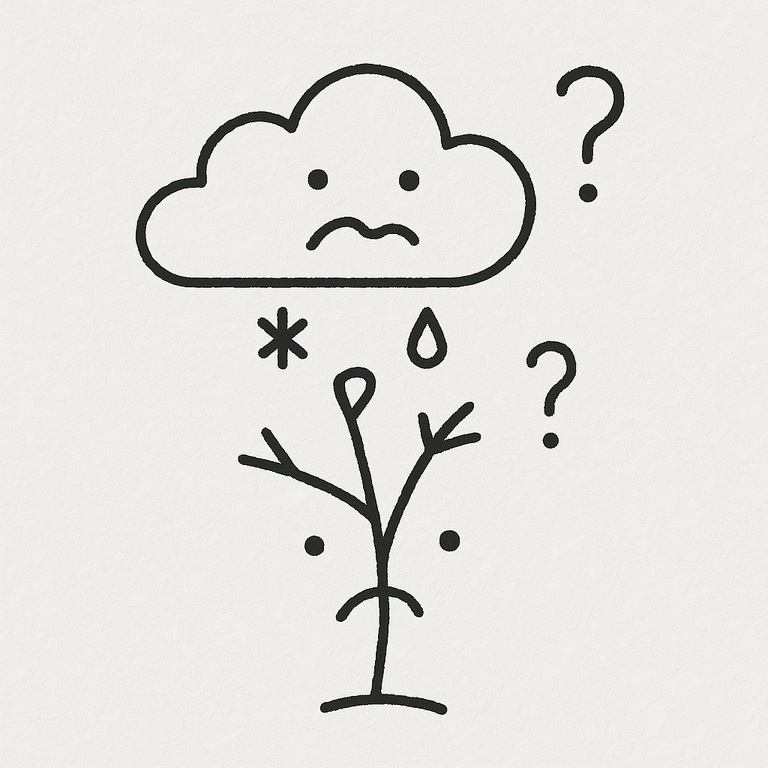Not Quite Spring, Not Quite Winter
A few months back, a neighbor told me that Duluth always has two false springs. He said it with a kind of worn certainty, like it was something you just come to accept after a couple decades on the hillside. That first warm spell in February or early March that gets the sap flowing, makes the chickadees a little more conversational. Then the cold returns, sometimes bringing March’s heaviest snow. But eventually, around mid-April, the snowpack relents for good, the buds stretch, and spring settles in.
This year, we’ve had that rhythm—but something’s off. We had the heavy snow, sure. Several storm systems swept through in late February and early March, blanketing the city. For a couple weeks, the ground was truly white again. But now, only a short time later, we’re in what would be the second false spring—and it doesn’t look false. The snow's gone from the hills, the creeks are flowing, and the 10-day forecast doesn’t show any serious reversion to cold. I'm starting to wonder if this second warm patch is the real thing. And if it is, that says something about how the climate here is shifting.
According to historical data, Duluth typically sees average March highs around 34°F, with lows near 21°F. This March has been warmer. By the 25th, we were sitting right around freezing for daytime highs, with several days earlier in the month breaking into the upper 30s and even low 40s. That’s not unheard of—but what stands out is how quickly the snowpack disappeared.
Minneapolis, just a couple hours south, saw similar temperatures but experienced a more dramatic early thaw. Down there, the snow vanished almost immediately after the storms passed. Here in Duluth, Lake Superior’s thermal mass did what it always does—moderated the extremes. The lake helped us hold onto winter a little longer than the Twin Cities did, keeping nighttime temperatures colder, delaying the melt. But once the air turned again toward warmth, even the lake couldn’t stop the thaw. The result: snow stuck around in town for a bit, but the hills surrounding the city—the Lester River valley, the ridgelines out toward Spirit Mountain—are now bare. Not just patchy, but fully brown and exposed. That’s weeks ahead of the old pattern.
I wrote earlier this season about trying to learn Duluth’s small water cycle—how water moves through our specific little landscape, from lake effect snow to groundwater to fog rolling back down the hill. One thing that’s always stood out is how tightly snowpack is tied to that cycle. It’s like a seasonal battery: snow holds water in place until temperatures rise slowly enough to let it release. This year, the melt came fast. Snow disappeared in broad strokes, not drips. That changes how water moves. More runoff, less recharge. More erosion, less filtering through the moss and soil.
This isn’t an isolated year, either. Duluth’s winters have warmed by nearly six degrees since 1970, according to city climate reports. That kind of shift scrambles long-standing patterns. We’re getting more intense storms and more freeze-thaw cycles. The result is this jittery kind of season—warm, cold, warm again—without the consistency that older locals used to rely on when they talked about the “two false springs.”
What I’m seeing confirms that those patterns are drifting. I don’t think we’ll get a third round of real winter this year. The birds are too active, the soil’s too soft, the long-range forecasts are too mild. This might just be it. The real spring. Arriving early, muddy, and unseasonably quiet.
There’s an unease to it. That familiar tug that says the rhythm is off-beat. I’m trying not to read too much into any single season. But in the same breath, if I ignore what’s right in front of me—the bare hills in March, the warm wind off the lake—I’d be pretending. This is part of the change. Not a disaster, not an apocalypse, but a shift. A lurch sideways in the choreography we’re used to dancing each year.
What I’ve found most useful is listening. To the land, yes. But also to people who’ve lived here longer. They know the beat. They’ve felt the subtle shifts. When they say something's different, I believe them. And when the data backs it up, I know it’s not just a feeling. It’s a fact.
So this spring—false or not—I’m watching the ground. I’m watching how water moves. I’m paying attention to what’s missing and what’s new. And I’m holding space for the idea that we may be entering a new kind of seasonal rhythm. One shaped not just by the lake and the latitude, but by the wider forces that are reshaping climate everywhere.
And as that rhythm changes, maybe we change too—not in fear, but in practice. In how we garden, how we store water, how we listen to the thaw.

Congratulations @michael561! You have completed the following achievement on the Hive blockchain And have been rewarded with New badge(s)
Your next target is to reach 3750 upvotes.
You can view your badges on your board and compare yourself to others in the Ranking
If you no longer want to receive notifications, reply to this comment with the word
STOP